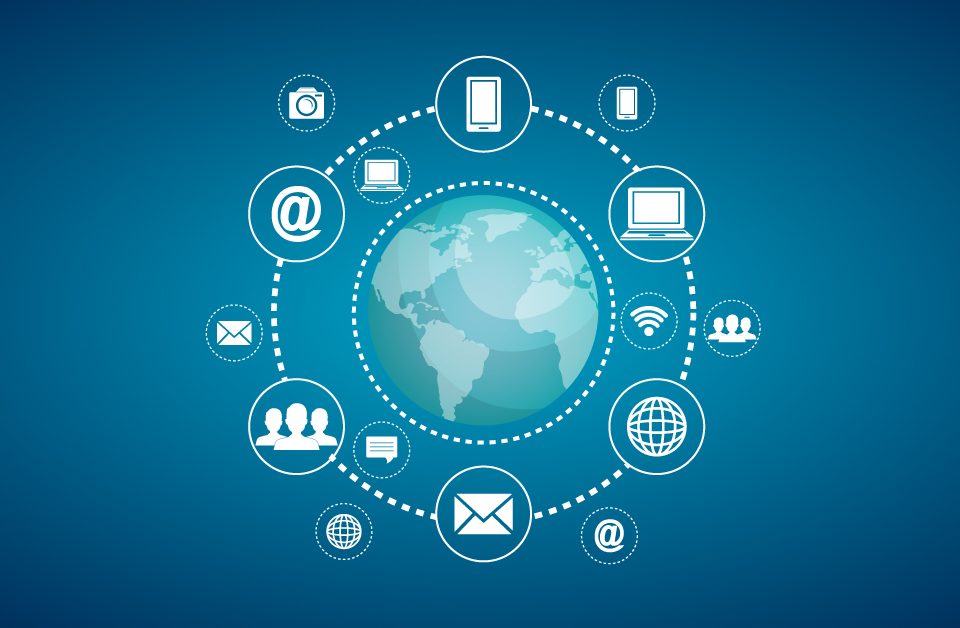Digital Marketing can help your business revive itself during the COVID-19 era
Gone are the days when you use passbook updating to know your account statement or wait in a queue to book a movie ticket. Highway toll booths have become straight queue-less drive-thru. Heck, restaurants include a separate tip column in the swipe machine while paying bills online / via card or it gets even better… The road-side fast food joint has a QR scanner through which I can pay him digitally hassle-free without counting change. I pay my bills online and tax calculations have become a child’s play due to the digitization of the records.
What is Digital Marketing?
Digital Marketing is a term defined to achieve your business objectives and goals using online channels. From wardrobe shopping to groceries, furniture & getting laundry delivered everything is online. With this new shift, marketers did not waste any-time and quickly adapted to use social media & other digital tools to push & pull the consumer which gave birth to Digital marketing.
Importance of Digital Marketing
It goes without saying, this is the digital era, and “Go Digital” is the buzz word out there. Legacy businesses that refused to adapt to the digital change have faced downfalls. Change is the only constant and when it makes our life easier, why finds it difficult to learn and adapt to the emerging digital trends. Especially during pressing times like a global Covid-19 pandemic, it shows that people have only shopped more and spent more all at the luxury of being in their houses.
People are spending multitudes of hours on the internet due to state-wise lockdown.. All you need is an internet connection and bam!! You can get to still do your business “online “saving operational costs and taking huge breaths of relief from infrastructure and maintenance. These are effortless immediate profits one save/gain when marketed online.
A very realistic example would be Xiaomi MI’s decision to offer certain phones of their lineup as an online-only purchase model. They market it in an attractive way, announce a launch date, get the countdown clock in the ad pages people navigate through, and raise the curiosity and people naturally become interested. End results: MI phones sold out the entire batch within seconds. Yes!! This is what happens, every time. Interested? Let’s take it further by getting to the bottom of what are the strategies with which you can digitally market your business.
Top 7 strategies one can opt/adapt to help business revive and grow profitable
- Search Engine – Marketing and Optimization
In simple terminology, SEM (Search Engine Marketing) is to draw business traffic towards your website by choosing to pay users who visit the site through PPC (Pay per Click) remunerations.
There is also CPM (Cost per Click) and other models for SEM. Google Ads and Bing Ads are such platforms that cater to this strategy.
SEO (Search Engine Optimization) is essentially increasing traffic for your website so that your business naturally comes on top during search engine queries. SEO work involves addressing the technicalities related to the authenticity and quality of the content, search indexing, query matching through keyword filters, etc
- Content Creation
COVID’19 has shown us people’s boredom need to be catered to. Digital Content Creators have risen to the occasion and have been generous with providing seamless content. A slow yet sure-shot way of improving your business is by having tie-ups with content creators for YouTube bloggers, Vlogging authors, and Product Reviewers. Word of mouth from trusted areas of expertise in their content will boost up your business solidly.
- Social Media Marketing
With the insane amount of time people are logged into social media sites, it only results as a huge potential lead for marketing. It can be through several forms. Share content, word of mouth, support communities and groups with offers or discounts, have an agreement with Social Media experts to boost up your business.
- Digital Advertisements
You can market your business through advertisements digitally. Images, short video clips featuring your business, offers, discounts, etc. can be posted as ads with a link to your website which organically brings your business towards profitability.
- Retargeting and Remarketing
This strategy is to retain business with people you have already done transactions or trade with. Widely based on cookie technology, this populates advertisements, blog links, video suggestions to people based on what they search often relating to their site domains. The conversion rate is high as you only target people who are repeat visitors to your products and website. This can be optimized based on customer’s buying patterns and preferences.
- Mobile Marketing
Yes, the name conveys the meaning. Marketing dedicatedly to the mobile user community audience. This is by far the best since everyone uses a smartphone these days and potentially your ad would be reaching everyone. The prior requirement is that the ads, blogs, video promotions should all be customized for mobile viewing. Supporting plug-ins and optimization for low data and memory consumption is mandatory pre-requisites. This is a segment that will continue to grow and you should never get second-thoughts on investing in this strategy.
- Web Analytics
This is by far the most cost-effective strategy as it provides you to put your mouth where the money lies upon. This is a statistics-based data-driven approach where you would be pointed at directions to improve based on user preferences, feedback, time spent on the site/ad/webpage. Google Analytics is one of the best free tools to get metrics for your site’s performance before deciding to put ads there. Several other comprehensive tools like Spring Metrics, Mint, Chartbeat, Clicky offer in-depth analysis stats to take decision calls.
Conclusion
COVID’19 has pushed almost every business out there to rely on the digital channels for a bare minimum of break-even, let alone the prospect of forecasted revenue. Digital Marketing has ironed out pretty much even with the same yield obtainable from a traditional business system.
This is the future and by a combination of strategies, be rest assured that your business keeps improving!!




